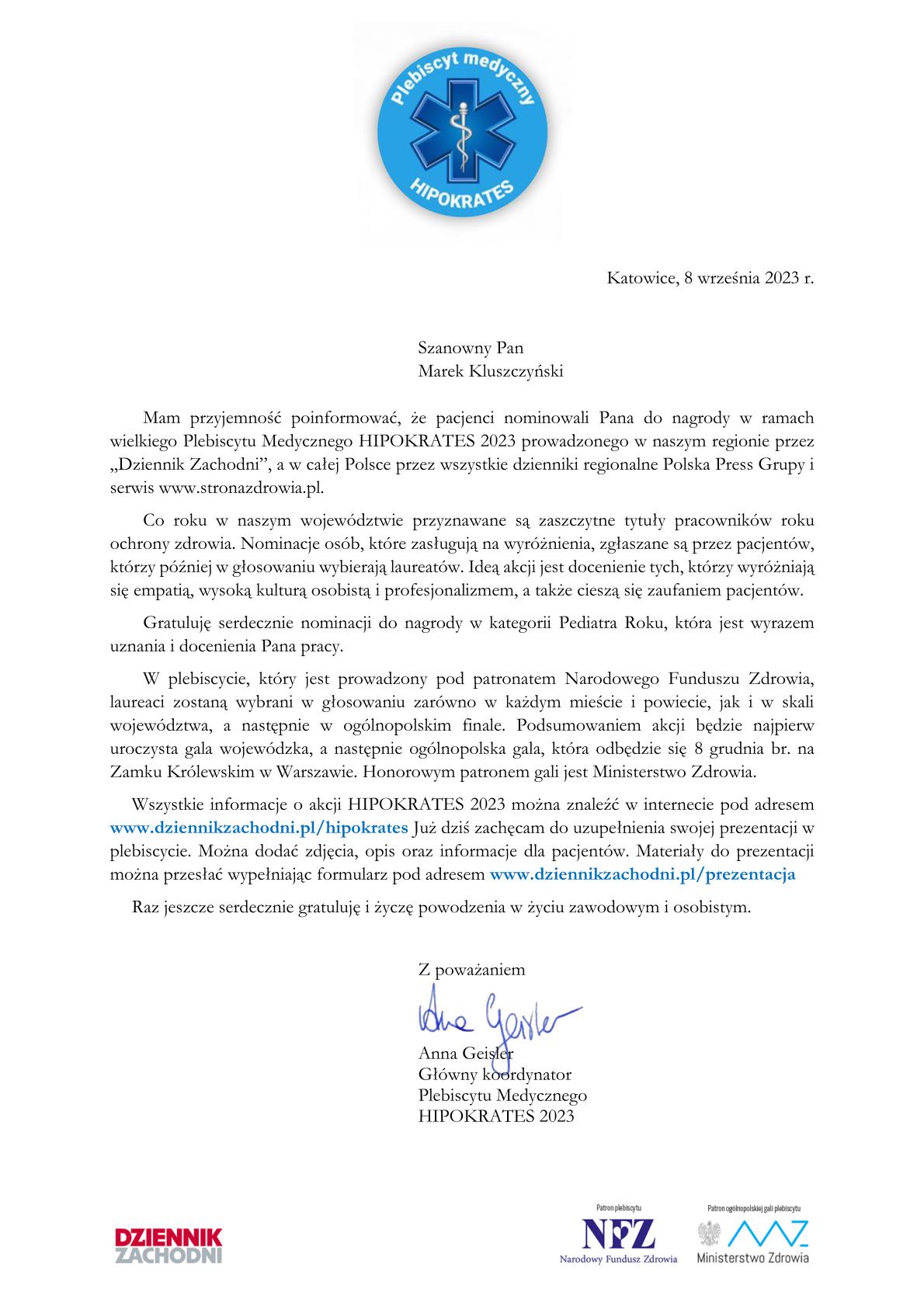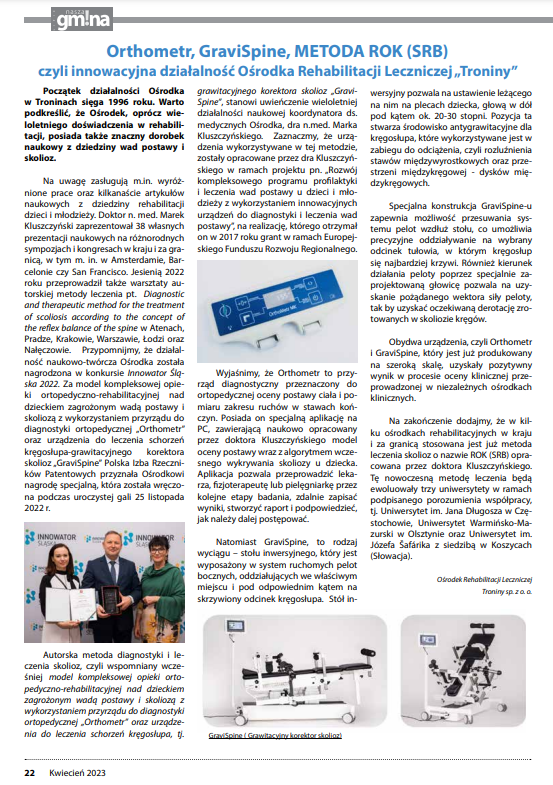EARLY SCOLOSIS DETECTION ALGORITHM
According to DR N. MED. M. KLUSZCZYŃSKI
(The work was awarded at the International Rehabilitation Symposium in Rzeszów in 2017)
The coordinator and founder of the center, Dr. M. Kluszczyński, a pediatrician specialist in medical rehabilitation, has been treating scoliosis for 22 years. Initially, he served as a resident assistant for specialization at the Rehabilitation Clinic of the Medical University of Silesia in the Upper Silesian Rehabilitation Center in Repty Śląskie with Professor Dobosiewicz and then as the head and head of the Department and Department of Rehabilitation of the Provincial Specialist Hospital in Częstochowa, which he headed for 19 years. At the same time, in 1998, he established and ran a rehabilitation center under the current name of the “Troniny” Therapeutic Rehabilitation Center, in which he devotes himself to his passion for treating scoliosis. From 2015, an assistant professor at the Department of Physiotherapy at the Jan Długosz in Częstochowa.
Through many years of experience in treating scoliosis in several thousand children, as well as through scientific activity and active participation in courses, workshops, symposia and conferences in Poland and abroad (see doctor’s profile), he has developed an effective model (algorithm) for the early diagnosis and treatment of a child with scoliosis.
AWWS – as an acronym of the words Early Scoliosis Detection Algorithm
Due to the unique dynamics of the disease, early detection and appropriate treatment to prevent the worsening of spine curvature is still a challenge for family doctors, pediatricians, orthopedists and rehabilitation specialists. The unpredictable development of slight scoliosis, especially in the period of rapid childhood growth, makes us look for the best way to identify it early and implement treatment.
Due to the unique dynamics of the disease, early detection and appropriate treatment to prevent the worsening of spine curvature is still a challenge for family doctors, pediatricians, orthopedists and rehabilitation specialists. The unpredictable development of slight scoliosis, especially in the period of rapid childhood growth, makes us look for the best way to identify it early and implement treatment.
International associations are particularly active in this area – SRS (Scoliosis Research Society) and SOSORT (Society on Scoliosis Orthopedic and Rehabilitation Treatment) – they gather
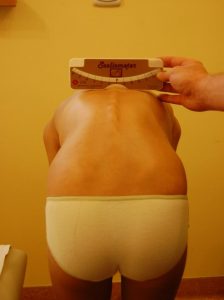
Measurement of the angle of trunk rotation – ATR (Angle of Trunk Rotation)
A very important diagnostic test is the visual assessment of the symmetry of the child’s spines in the sitting position during the stabilized pelvis.
A very important diagnostic test is the visual assessment of the symmetry of the child’s back in the sitting position during the stabilized pelvis.
The stabilized position of the torso on the sciatic tumors allows for elimination of the side scans of the child occurring in a standing position. This method allows for the simultaneous elimination of the influence of possible static and dynamic disturbances of the pelvic complex on the result of the measurement of the back symmetry in the child under the standing position.
Then, we measured the anterior-posterior curvatures of the spine:
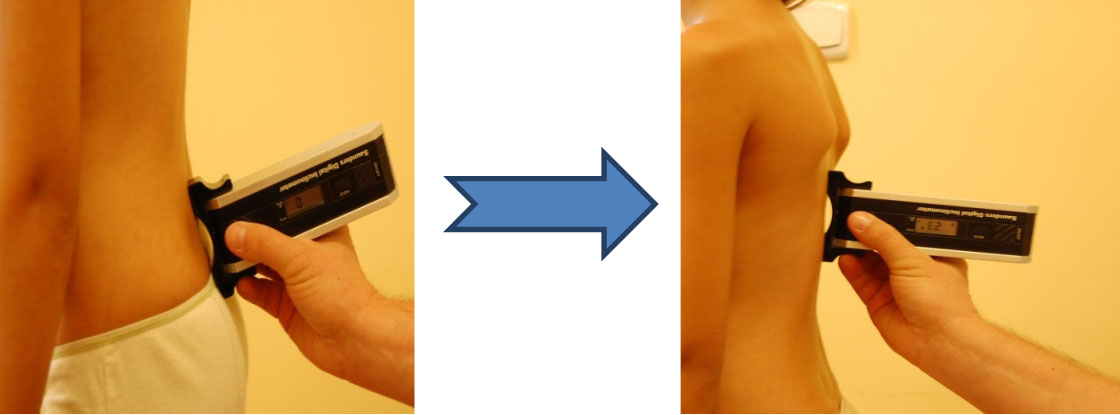
Measurement of the angle of lumbar lordosis and thoracic kyphosis with the Saunders inclinometer.
Functional length of the lower limbs – assessed according to Derbolovsky symptoms.
The Derbolovsky symptom was originally intended to assess blockage of the sacroiliac joint (K/B). In our facility, we use this symptom to assess the functional length of the lower limbs, as it reflects the overall stato-kinetic functional assessment of the pelvis and lower limbs more than just the symptoms of the blockage of the K/B joint. The influence of the functional shortening of one of the lower limbs on the shaping of the spine curvature has been confirmed by many researchers. Finding the difference in the level of the heels (or medial ankles) in the child lying down with his back and after going to sit down, we obtain preliminary, very imprecise information about the functional disorder of the iliac girdle complex and the need for functional symmetrization.
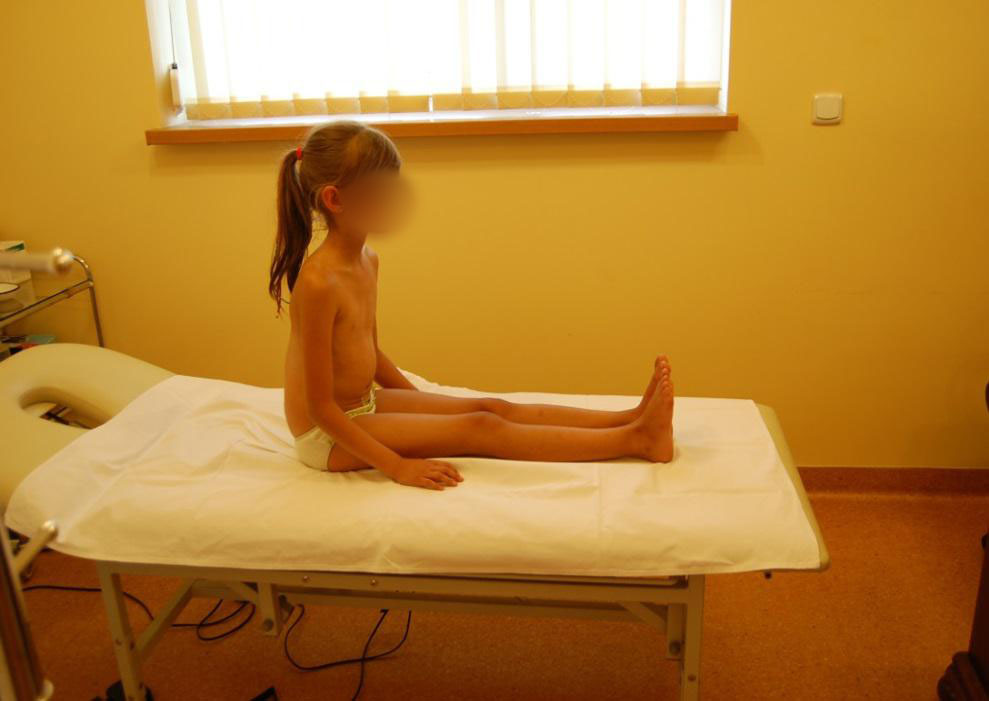
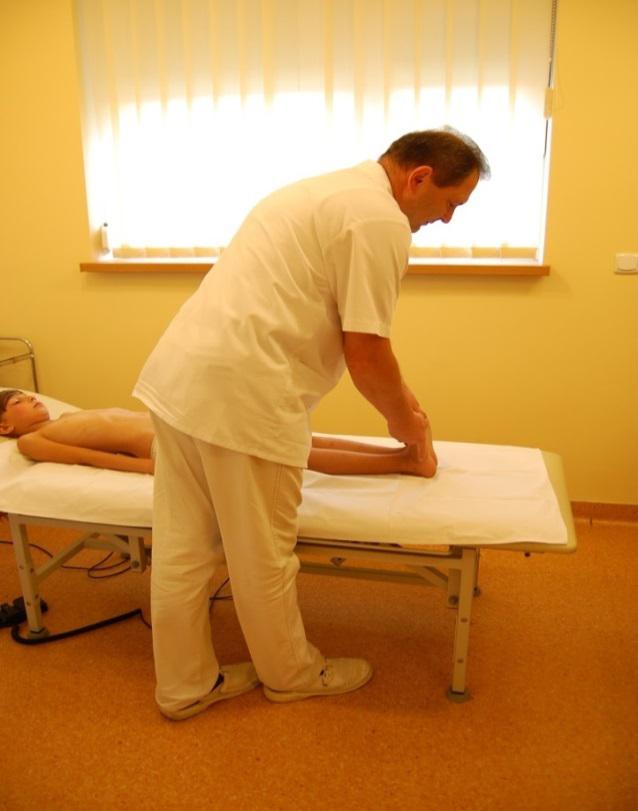
The aim of equalizing the functional length of the lower limbs and the functional symmetry of the pelvis with its joint ligament and muscular apparatus will be the goal of rehabilitation.
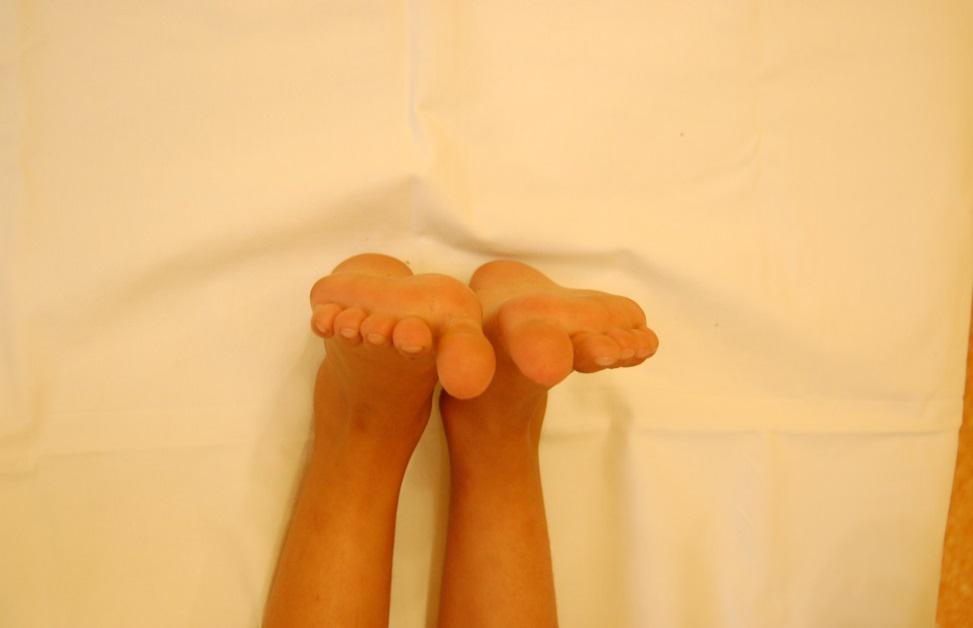
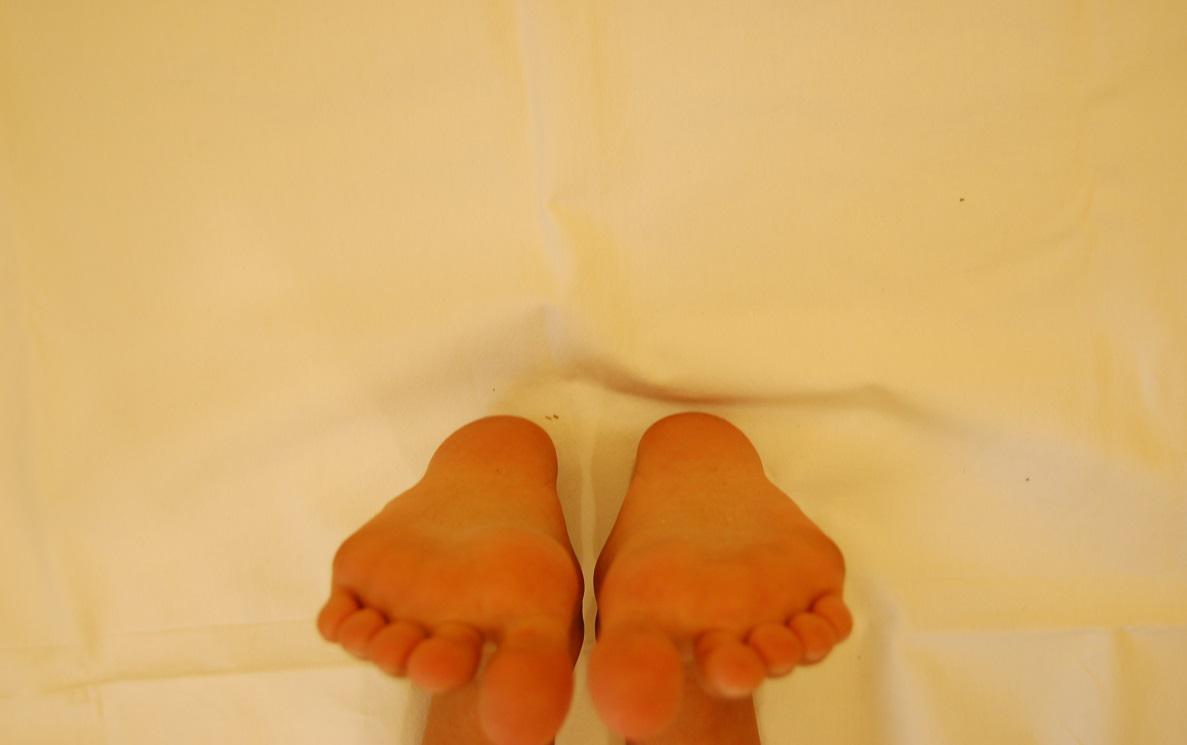
Assessment of statics and functions of joints of the lower limbs
In practice, it comes down to assessing the alignment of the knee and ankle joints. The assessment of valgus or varus of the knees consists of measuring the distance between the medial ankles in the standing position with the knees joined in the first case. The assessment of valgus of the step is done visually and by manual assessment of the mobility and stability of the joint.
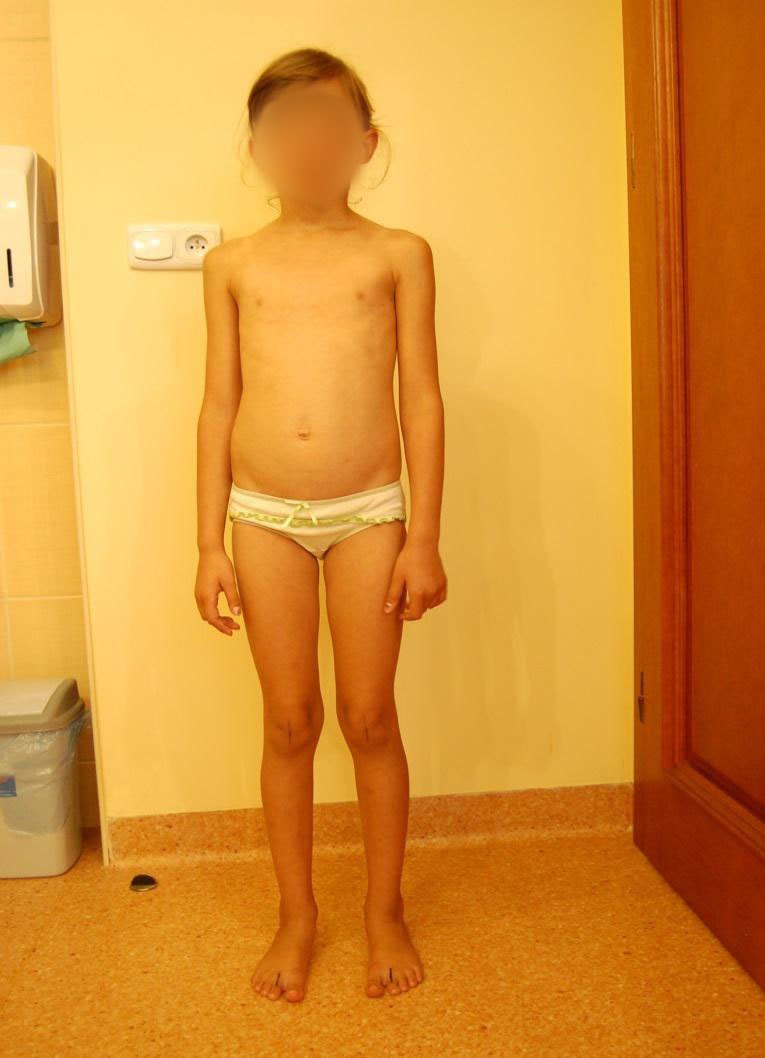
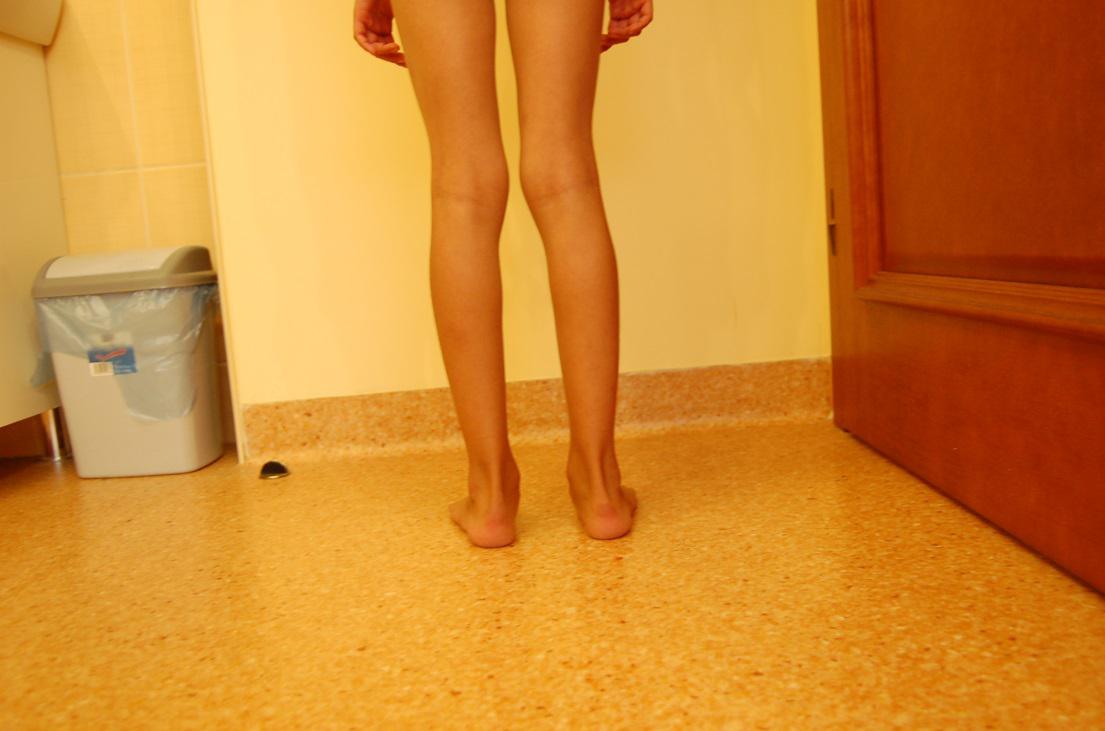
In addition to the abovementioned parameters, it is very important to test the child for the presence of joint laxity according to the nine-point Beighton scale. If a child has more than 6 out of 9 possible symptoms of joint laxity, the risk of scoliosis progression increases.
The procedure algorithm consists of 4 variants that include indications of the procedure depending on the size of the abovementioned test parameters. The statistical analysis carried out on the basis of the data from the last 6 years showed a very high effectiveness of the prevention of scoliosis according to the AWWS algorithm of Dr. Kluszczyński.
AN INNOVATIVE METHOD OF TREATING SCOLIOSIS
According to DR N. MED. M. KLUSZCZYŃSKI
The method of treating scoliosis according to Dr. Kluszczyński is based on 4 principles:
- Principle I – static-dynamic balance of the hip girdle in thelumbar spine,
- Principle II – symmetrization and functional optimization (stabilization) of the spine in 3 planes,
- 3rd rule — symmetrization of afferent nerve impulses generated from proprioceptors and mechanoreceptors of active and passive postural paraspinal structures (original neurological massage).
- 4th principle – passive-active corrective influence on the spine and paraspinal structures through an individually adjusted and permanently adjusted orthopedic corset and periodic use of an external three-plane spine curvature correction procedure with anti-gravity relief. The scoliosis correction procedure is performed at the center using a device designed by Dr. Kluszczyński and is called the Grawitacyjny Corrector of Scoliosis – GKS.
The author is in possession of the consent of the bioethical commission of the Regional Medical Chamber and the bioethical commission (Resolution No. K. B. Cz-001/2014 of January 29, 2014). Academy of Jan Długosz in Częstochowa for the implementation of scientific research, topic: Evaluation of an innovative program for the prevention and treatment of children and adolescents with lateral curvature of the spine using a device of its own design – the Scoliosis Gravity Corrector (GKS).
The device Gravitacyjny Corrector Skolioz is patented in the Patent Office of the Republic of Poland with the number P.222124






